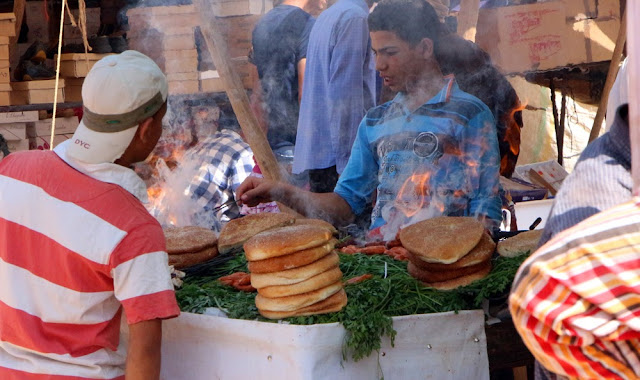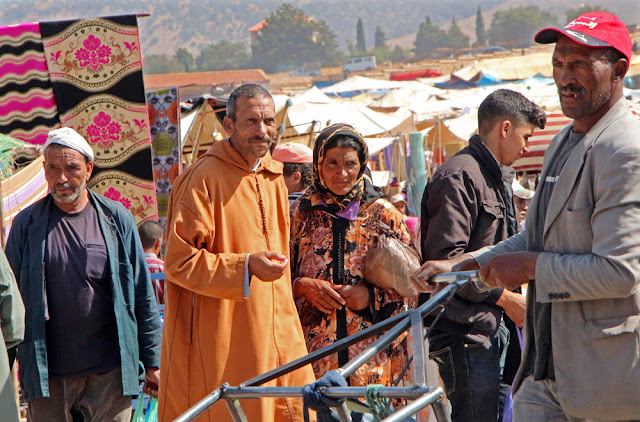It is quite normal to hear both Moroccans and ex-pats complaining about corruption in Morocco. Indeed, listening to the stories, one could be forgiven for thinking that Morocco was the home of corruption. This is far from the truth. Almost every country in the world suffers from corruption of one form or another
What constitutes corruption is often disguised in so-called developed countries under different names - lobbying, white-collar crime, insider-trading, but is corruption nevertheless.
More than half of people surveyed by Transparency International believe the level of corruption in their countries has increased over the past two years, according to the world's largest public opinion survey on the subject.
The 2013 global corruption barometer surveyed 114,270 people in 107 countries. Unlike the better-known corruption perceptions index, which relies on expert opinion, this project surveys the public on their views and experiences of corruption.
More than one in four respondents (27%) said they paid a bribe over the past 12 months when accessing key public institutions and services. Of those who reported paying a bribe, 40% said they did so "to speed things up"; 27% said "it was the only way to obtain a service", while 21% said they paid a bribe "as a gift, or to express gratitude". The remaining 12% of respondents said it was "to get a cheaper service".
Corruption is, by definition, difficult to measure. Transparency International's surveys are among the few sources of data on the subject, though they focus largely on perception. Now in its eighth edition, this year's survey is the largest of its kind and includes some countries, such as Libya and Tunisia, for the first time.
Other key findings from the survey:
• Political parties are considered the most corrupt institution, followed by the police and the judiciary. Globally, religious institutions are seen as least corrupt. In Israel, Japan, Sudan and South Sudan, however, religious bodies were seen to be highly corrupt.
• Nearly two-thirds of respondents said they believe personal contacts and relationships help get things done in the public sector in their country. In 10 countries, including Israel, Italy, Malawi, Russia and Vanuatu, this figure was more than 80%.
• In 2008, 31% of respondents said their government's efforts to fight corruption were effective. This year that figure fell to 22%.
• In the UK, the media and political parties were rated most corrupt and 5% of people surveyed reported paying a bribe.
• Wealthier respondents reported paying bribes more often than their poorer counterparts. Of those with income above their country's average, 31% said they paid a bribe last year, compared with 26% of respondents with below average income.
• Globally, 28% of men reported paying a bribe, compared with 25% of women. In some countries, such as Nepal and Pakistan, many more men reported paying bribes than women. In Colombia, meanwhile, 27% of women reported paying bribes compared with only 16% of men.
Denmark, Finland, Japan, Australia were tied for the least bribe-ridden country, with only 1 percent of respondents in each country admitting to paying bribes.
In the United States, roughly 1 in 14 people said they paid off officials. Of those, 7 percent said they bribed the police, 11 percent said they bribed educators and 15 percent said they bribed judges. Americans also said they saw political parties as the most corrupt public institution, with 76% of respondents stating that parties were affected by corruption.
In 36 countries, respondents named the police the most corrupt institution.
And some good news...
Samir Bennis, writing for
Morocco World News was able to report sone good news when a Police Chief of Safi ordered the arrest of his own son
Due to the deep-rooted corruption of some officials in Morocco and the limp state of the judicial system, people are used to hear stories of the ‘sons of’ who escape prosecution following the crimes they commit against other underprivileged Moroccans.
Morocco World News has reported several such stories of power abuse to the detriment of the image of Morocco. However, the image is not that dim since there remains honorable officials who are unconditionally dedicated to the people, justice and the common good.
In a rare incident, the police chief of the city of Safi gave orders to his services to place his son under custody and begin a preliminary investigation before introducing him to the office of the Public Prosecutor. The unprecedented decision of the father came after his son caused a traffic accident while driving his sister’s car along with a girl. The reckless son, inattentive where he steers, crushed a young man causing serious injuries and the amputation of both legs.
According to
Al Massae daily newspaper, which reported the news in its issue of Friday, August 23, the case caused great embarrassment to the police of Safi because it involved the son of their chief. However, the later was exemplary when he gave his strict orders in favor of justice against his own son, reminding us of ideal characters in Bollywood films.
In custody with other defendants at the police cell, the son will be presented to the court for charges of breaching the traffic code and inflicting injuries on others and causing a permanent disability.
SHARE THIS!













































